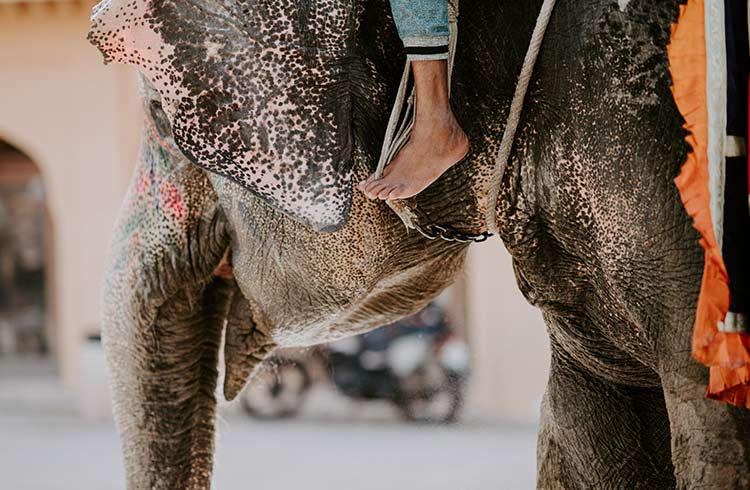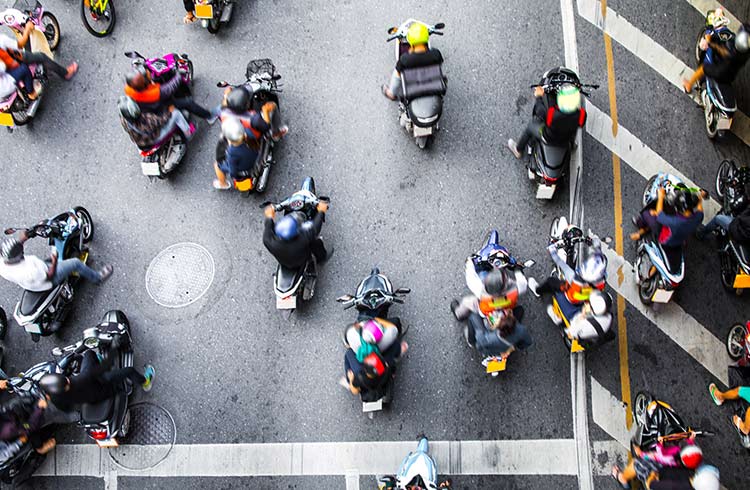Why Elephant Riding Should Be Removed from Your Travels
Before you climb onto an elephant's back, here's the truth about what you're endorsing.
 Photo © Annie Spratt
Photo © Annie Spratt
There might be a perceived air of romance about riding an elephant. Sitting atop its back as the giant animal slowly meanders along a white sand beach, or through rushing streams in the thick of the jungle. It’s the stuff great travel stories are made of.
But the truth is, riding elephants should be avoided. In the US, organizations, including the Humane Society of the US and the Association of Zoos and Aquariums, are against riding elephants because of the abuse the animals undergo when they are taught to carry people, as well as safety concerns.
Awareness of the harmful nature of the practice was raised by a World Animal Protection initiative in 2014, which highlighted the cruel conditions elephants are kept in.
“The results found that the welfare standards in most elephant venues that were assessed in Southeast Asia was quite poor,” says Intrepid Group’s Responsible Business Manager, Liz Manning.
“Over the past five years, media coverage on the issue has grown and an increasing number of travel companies have followed suit in removing these experiences from their trips-raising awareness amongst their customers” she adds.
- Why Are People Still Riding Them?
- Elephant Training
- Elephant Health
- Social Interaction
- Living Conditions
- Don't Believe Everything You Hear
- What Can You Do if You Don't Want to Ride Elephants?
- Then vs Now
Why are people still riding elephants?
For most, it's simply a lack of awareness. If everyone saw the videos of elephants being beaten with bullhooks or electric prods, it's doubtful they would still be keen to ride one. Aside from the abuse, there are a variety of reasons people should skip riding an elephant and opt for more humane ways to experience these creatures.
Here are a few more reasons to seek out an elephant sanctuary that doesn’t offer rides or circus tricks.
The training
Phajaan, or elephant crushing, is a long-standing accepted tradition in Thai culture. This harmful training method is what elephants undergo to become part of the tourism industry. Young elephants are taken from their mothers and confined to a small place, then abused with bullhooks and bamboo sticks spiked with nails. They are also starved and deprived of sleep, in order to crush their spirits and become submissive to humans.
This is an accepted practice in Thailand, and many elephants you will see in trekking camps will have undergone this horrific process. However, this is not the only reason you should give elephant riding a miss.
Elephant health
Elephants' spines cannot support the weight of people and doing so all day can lead to permanent spinal injuries. There are further complications from having a chair (howdah) attached to their backs. This clunky contraption rubs on their backs, causing blisters that can become infected. In addition, wear and tear on the elephant’s feet after long-term trekking can cause foot infections and injuries.
Social interaction
Elephants are a lot like humans. They socialize, have families and friends, feel pain, sorrow and happiness. When they are in trekking camps, they are often not engaging with other elephants. In some camps, they live their lives essentially in solitary confinement.
Living conditions
Baby elephants are chained to their mothers during treks, which can cause them harm, as they must keep pace with their mother as she walks. These baby elephants can't stop to rest or nurse as they must continue trekking. To keep pace, the guide (mahout) will prod the elephants with a bullhook to keep them moving. The bullhook, which elephants remember from their torture during the phajaan, can immediately strike fear in them. This fear can trigger a reaction that can not only hurt the elephants but also the riders.
After the trek, the elephants are kept chained when they aren't working. They are not fed enough or given enough water. Many travelers have reported seeing elephants swaying, pacing and bobbing their heads at trekking camps – signs of serious psychological stress.
Don't believe everything you hear
If a tour operator offers anything other than spending time with elephants, you should avoid it. If an elephant 'sanctuary' or wildlife park offers elephant riding, circuses or painting shows, you can be certain the elephants have undergone horrific abuse to get them to where they are.
While some places might market their experience as humane and claim they don’t use bullhooks, the fact that the elephants are being used for trekking means they are being harmed.
What are the alternatives?
There are still lots of places where travelers can interact with elephants ethically, according to Liz.
“From 2020, on Intrepid’s Laos trips travelers can witness elephants roaming and swimming in their natural habitat at MandaLao, the first non-riding elephant sanctuary in the country. Intrepid’s non-profit The Intrepid Foundation is also raising funds to help the organization build a new night enclosure with mahout housing.
Many of our travelers to Thailand from 2020 will visit ChiangChill, a venue that used to offer interaction with elephants but has now moved to a new model, where visitors can observe the elephants from a safe distance, watching them graze and socialize.”
The Elephant Nature Park or Boon Lott’s Elephant Sanctuary in Northern Thailand are two reputable places where human–elephant interaction won't compromise the elephant’s safety.
Then vs now
As word spreads about the horrific truth behind elephant riding, tour operators and national parks around the world are taking a stance. In Vietnam, Yok Don National Park has stopped offering elephant rides, instead encouraging travelers to simply observe elephants in their natural habitat. In Nepal, Chitwan National Park ended elephant-back tours, instead using them as walking guides through the park.
In 2016, TripAdvisor stopped promoting operators that offer elephant rides as an activity, to take a stance on the cruel treatment. In 2018, Instagram banned the ability to search hashtags related to unethical wildlife tourism, as a method of educating users about the issues. A message about protecting wildlife, with a button to 'Learn more' now appears if you try to search hashtags such as, #koalaselfie, #elephantriding, #slothselfie, and more.
More than 200 companies have removed elephant riding from their itineraries since 2014. But, according to Intrepid Travel’s Liz Manning, there’s still a lot more to be done.
“To encourage more businesses to follow suit, travelers should choose to visit places with limited or no physical interaction with the elephants. World Animal Protection has a great elephant-friendly checklist which includes venues that have the highest level of care for their elephants.”
To find out more about high-welfare elephant tourism businesses, see the World Animal Protection’s elephant-friendly checklist which includes Thailand, Cambodia, India, Nepal, Sri Lanka and Laos.
Here are a number of other wildlife experiences you should avoid on your next adventure.
*This article was originally written by Diana Edelman, who spent a week volunteering at the Elephant Nature Park in Thailand in 2010.
Related articles
Simple and flexible travel insurance
You can buy at home or while traveling, and claim online from anywhere in the world. With 150+ adventure activities covered and 24/7 emergency assistance.
Get a quote


No Comments